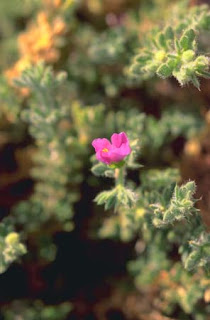Filefish
The filefish (Monacanthidae) are a diverse family of tropical to subtropical tetraodontiform marine fish, which are also known as foolfish, leatherjackets or shingles. They live in the Atlantic, Pacific and Indian Oceans. Filefish are closely related to the triggerfish, pufferfish and trunkfish.
The filefish family comprises approximately 102 species in 27 genera. More than half of the species are found in Australian waters, with 58 species in 23 genera.
Their laterally compressed bodies and rough, sandpapery skin inspired the filefish's common name; it is said that dried filefish skin was once used to finish wooden boats.
Description
Appearing very much like their close relatives the triggerfish, filefish are rhomboid-shaped
fish that have beautifully elaborate cryptic patterns. Deeply keeled
bodies give a false impression of size when these fish are viewed facing
the flanks. Filefish have soft, simple fins with comparatively small
pectoral fins and truncated, fan-shaped tail fins; a slender,
retractable spine crowns the head. Although there are usually two of
these spines, the second spine is greatly reduced, being used only to
lock the first spine in the erect position; this explains the family
name Monacanthidae, from the Greek monos meaning "one" and akantha meaning "thorn". Some species also have recurved spines on the base of the tail.
fish that have beautifully elaborate cryptic patterns. Deeply keeled
bodies give a false impression of size when these fish are viewed facing
the flanks. Filefish have soft, simple fins with comparatively small
pectoral fins and truncated, fan-shaped tail fins; a slender,
retractable spine crowns the head. Although there are usually two of
these spines, the second spine is greatly reduced, being used only to
lock the first spine in the erect position; this explains the family
name Monacanthidae, from the Greek monos meaning "one" and akantha meaning "thorn". Some species also have recurved spines on the base of the tail.
The small terminal mouths of filefish have specialized incisor teeth
on the upper and lower jaw; in the upper jaw there are four teeth in the
inner series and six in the outer series; in the lower jaw, there are
4-6 in an outer series only. The snout is tapered and projecting; eyes
are located high on the head. Although scaled, some filefish have such
small scales as to appear scaleless. Like the triggerfish, filefish have
small gill
openings and greatly elongated pelvic bones creating a "dewlap" of skin
running between the bone's sharply keeled termination and the belly.
The pelvis is articulated with other bones of the "pelvic girdle" and is
capable of moving upwards and downwards in many species to form a large
dewlap (this is used to make the fish appear much deeper in the body
than is actually the case). Some filefish erect the dorsal spine and
pelvis simultaneously to make it more difficult for a predator to remove
the fish from a cave.
on the upper and lower jaw; in the upper jaw there are four teeth in the
inner series and six in the outer series; in the lower jaw, there are
4-6 in an outer series only. The snout is tapered and projecting; eyes
are located high on the head. Although scaled, some filefish have such
small scales as to appear scaleless. Like the triggerfish, filefish have
small gill
openings and greatly elongated pelvic bones creating a "dewlap" of skin
running between the bone's sharply keeled termination and the belly.
The pelvis is articulated with other bones of the "pelvic girdle" and is
capable of moving upwards and downwards in many species to form a large
dewlap (this is used to make the fish appear much deeper in the body
than is actually the case). Some filefish erect the dorsal spine and
pelvis simultaneously to make it more difficult for a predator to remove
the fish from a cave.
The largest filefish species is the scrawled filefish (Aluterus scriptus) at up to 110 cm (43 in) in length; most species are below 60 cm (24 in) in length. There is marked sexual dimorphism
in some species, with the sexes possessing different coloration,
different body shapes, and the males with larger caudal spines and
bristles.
in some species, with the sexes possessing different coloration,
different body shapes, and the males with larger caudal spines and
bristles.




















Comments